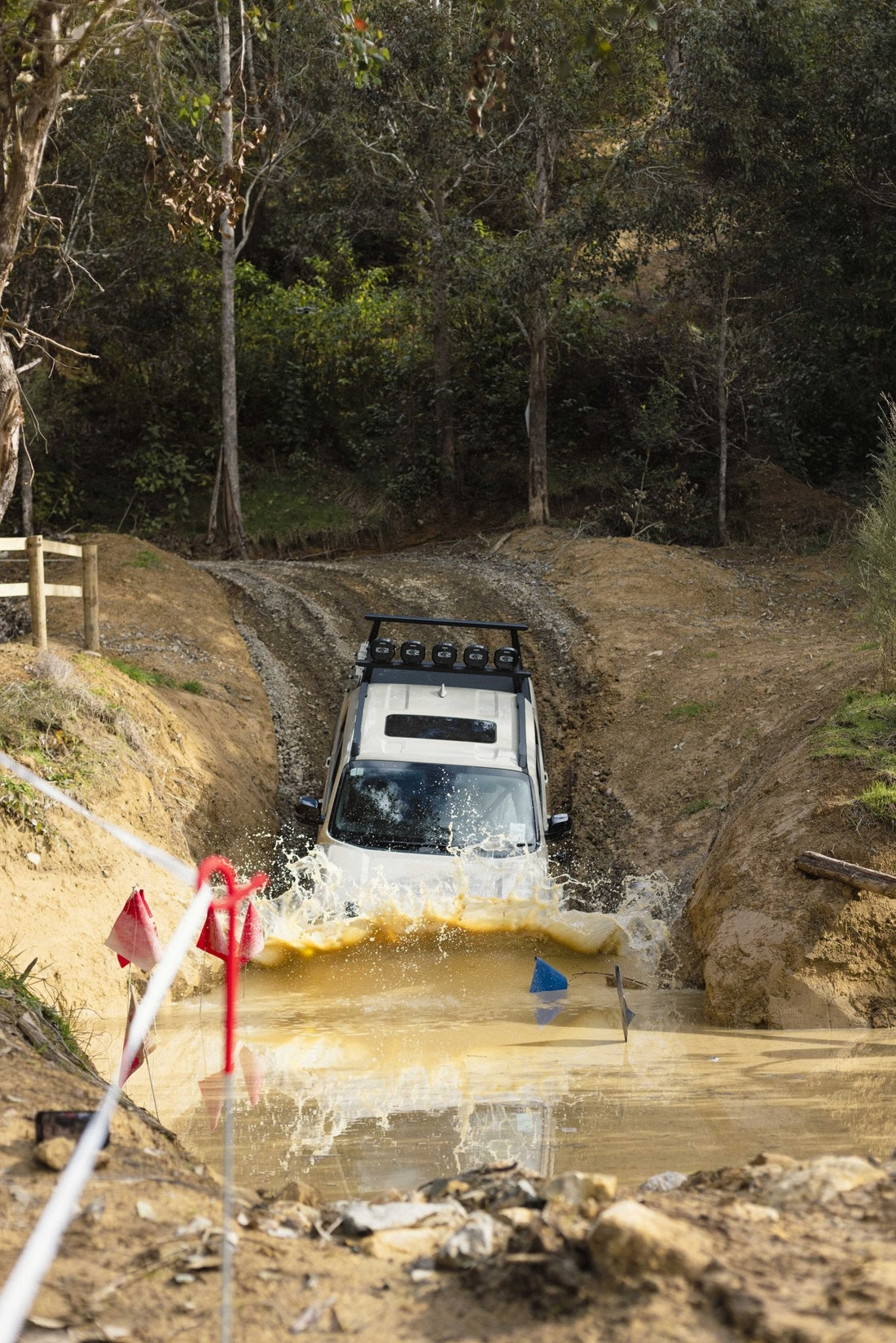
First drive off-road: The all-new Kia Tasman
Share
Oozing with tech, an all-diesel powertrain, and a highly-specced interior, how does the controversial-looking Kia Tasman stack up off-road? Kia New Zealand flew us down to Wellington to put the Kia Tasman through its paces off-road. Should the Tasman be considered a tough, hard-working, four-wheel drive contender here in NZ?

It seems as though there’s a flurry of new utes hitting the market at the moment from China, and beyond as the ‘ute’ becomes more than a farm-going utility vehicle, finding its way into the garage of families and adventure-lovers. Interiors are becoming much nicer, safety is improving, and aftermarket accessory companies can’t keep up. Gone are the days of Toyota, Ford, Mazda, Mitsubishi, and Nissan battling it out for ute supremacy — now there’s LDV, JAC, BYD, and now Kia in the mix, all scrapping it out for top honours. It’s fast becoming a competition of who has the best pie warmer, load-rating, interior fitout, accessory count, and engine torque. Utes are becoming much bigger too.

From Military Rigs to the Tasman
The Tasman might be Kia’s first ute, but it’s not Kia’s first 4WD. The company has been building military-spec off-roaders since the 1970s, many of which still serve in South Korean armed forces today. That experience isn’t just a marketing hook — it shows up in how the Tasman has been developed. Before its New Zealand launch, prototypes endured 18,000 rounds of stress testing across Dubai’s dunes, Californian rock gardens, and deep-water tanks in Gwangju, where Kia’s military rigs also get thrashed.
 That kind of pedigree helps explain why the Tasman doesn’t arrive looking like a rookie effort. Kia clearly wanted credibility straight out of the gate, and it shows.
That kind of pedigree helps explain why the Tasman doesn’t arrive looking like a rookie effort. Kia clearly wanted credibility straight out of the gate, and it shows.
 The Heart of the Tasman
The Heart of the Tasman
Under the bonnet, every Tasman gets the same 2.2-litre inline-four turbo-diesel, producing 154kW and 440Nm, paired to an eight-speed automatic. That puts it ahead of Triton and Hilux in terms of outright power output, but shy of the Ranger and Amarok V6s. It’s a proven motor, and with Kia’s gearbox tuning it feels relaxed in the normal drive modes but controlled in low range. Towing capacity is a proper 3,500kg braked, and payload is over a tonne, which means it’s not just chasing lifestyle buyers — this thing is built to haul and tow like the old guard.
 Drivetrain options include 2H, 4H, 4A, and 4L, letting you swap between part-time and full-time 4WD on the fly. Wading depth is a standout figure at 800mm across the board, outmuscling Hilux (700mm) and Triton (600mm), and matching the Ranger/Amarok duo. Ground clearance tops out at 252mm in X-Pro trim, giving it more belly height than Hilux (216mm) and Amarok (235mm), and just under Ranger Raptor’s 265mm. Kia hasn’t locked in approach/departure angles yet, but the numbers suggest it’s right in the hunt.
Drivetrain options include 2H, 4H, 4A, and 4L, letting you swap between part-time and full-time 4WD on the fly. Wading depth is a standout figure at 800mm across the board, outmuscling Hilux (700mm) and Triton (600mm), and matching the Ranger/Amarok duo. Ground clearance tops out at 252mm in X-Pro trim, giving it more belly height than Hilux (216mm) and Amarok (235mm), and just under Ranger Raptor’s 265mm. Kia hasn’t locked in approach/departure angles yet, but the numbers suggest it’s right in the hunt.
 And then there’s the diff lock story: standard across the range. The TX–TXS trims get a tough mechanical locker, while X-Line and X-Pro add a slick electromechanical locker tied into the terrain system and off-road cameras. For the spec sheet warriors, that’s a big tick.
And then there’s the diff lock story: standard across the range. The TX–TXS trims get a tough mechanical locker, while X-Line and X-Pro add a slick electromechanical locker tied into the terrain system and off-road cameras. For the spec sheet warriors, that’s a big tick.

Inside the Cabin
Climb into the Tasman and it’s clear Kia wanted to reset the bar for ute interiors. Front and centre is a near-30-inch panoramic digital display that merges driver instruments with the infotainment system. It’s crisp, fast, and very un-ute-like in how premium it feels. Even the physical controls — knurled dials and solid buttons — have that satisfying “click” normally reserved for high-end SUVs.
 Rear passengers aren’t treated like cargo, either. In higher trims, the second row slides and reclines, with hidden under-seat storage trays for stashing gear. The TXS adds rear fender storage, X-Line introduces a heated steering wheel, while the X-Pro brings ventilated front seats, Harman/Kardon audio, and a sunroof. Across the line-up you’ll find USB ports, wireless chargers (up to two in higher trims), and integrated tray lighting — the sort of details ute owners actually use.
Rear passengers aren’t treated like cargo, either. In higher trims, the second row slides and reclines, with hidden under-seat storage trays for stashing gear. The TXS adds rear fender storage, X-Line introduces a heated steering wheel, while the X-Pro brings ventilated front seats, Harman/Kardon audio, and a sunroof. Across the line-up you’ll find USB ports, wireless chargers (up to two in higher trims), and integrated tray lighting — the sort of details ute owners actually use.
 Kia Connect tech also makes its debut, giving you remote access to lock/unlock, pre-condition the cabin, and track your Tasman from an app. Add in over-the-air updates and the ute should stay fresh long after you’ve bought it.
Kia Connect tech also makes its debut, giving you remote access to lock/unlock, pre-condition the cabin, and track your Tasman from an app. Add in over-the-air updates and the ute should stay fresh long after you’ve bought it.

The Dirt Farm Test
With our safety briefing out of the way, we jumped into our allocated vehicles, paired with another journalist. In my case, good friend and talented photographer Ralph Cabansag was my wingman for this trip. The convoy format meant a lead vehicle relayed instructions over radio — which modes to engage, which buttons to push — as we approached each obstacle. Personally, I’d rather have been let loose to figure things out, but with a wide range of driver skill levels on site, the guided approach made sense.
 The Tasman impressed right away in low-range. In “Mud” mode, throttle response was superbly dulled down — the best I’ve felt in a modern electronic-throttle ute. Many rivals forget to tame the pedal in low-range, resulting in jerky inputs, but the Tasman made crawling easy and predictable.
The Tasman impressed right away in low-range. In “Mud” mode, throttle response was superbly dulled down — the best I’ve felt in a modern electronic-throttle ute. Many rivals forget to tame the pedal in low-range, resulting in jerky inputs, but the Tasman made crawling easy and predictable.
 When faced with a rocky section, we engaged Kia’s new X-Trek function — essentially an off-road cruise control. Set your crawl speed and the ute meters out throttle and brake automatically, allowing you to focus solely on steering. It felt a little like the truck was doing the driving for me, which is increasingly common with modern off-roaders. Whether that’s a positive or a negative comes down to personal preference: purists will miss the mechanical challenge, but newcomers will appreciate the confidence it inspires.
When faced with a rocky section, we engaged Kia’s new X-Trek function — essentially an off-road cruise control. Set your crawl speed and the ute meters out throttle and brake automatically, allowing you to focus solely on steering. It felt a little like the truck was doing the driving for me, which is increasingly common with modern off-roaders. Whether that’s a positive or a negative comes down to personal preference: purists will miss the mechanical challenge, but newcomers will appreciate the confidence it inspires.
 Beyond Mud and Rock, Kia also includes modes for Sand, Snow, and a generalised Auto setting, all tuned to adjust throttle mapping, traction control, and gearbox logic. In practice, Mud mode was enough for most of Dirt Farm’s terrain, but it’s reassuring to know the Tasman’s systems are built with varied conditions in mind. On steeper climbs, hill descent and hill start assist worked seamlessly, and the electromechanical diff lock on the X-Pro engaged quickly when required.
Beyond Mud and Rock, Kia also includes modes for Sand, Snow, and a generalised Auto setting, all tuned to adjust throttle mapping, traction control, and gearbox logic. In practice, Mud mode was enough for most of Dirt Farm’s terrain, but it’s reassuring to know the Tasman’s systems are built with varied conditions in mind. On steeper climbs, hill descent and hill start assist worked seamlessly, and the electromechanical diff lock on the X-Pro engaged quickly when required.
 Overall, the Tasman felt sure-footed, stable, and easy to place. If anything, it was almost too easy — Kia’s tech layers take away much of the stress and, in doing so, some of the involvement. But for the average buyer who just wants to get through a boggy paddock or over a washed-out track without drama, that’s exactly the point.
Overall, the Tasman felt sure-footed, stable, and easy to place. If anything, it was almost too easy — Kia’s tech layers take away much of the stress and, in doing so, some of the involvement. But for the average buyer who just wants to get through a boggy paddock or over a washed-out track without drama, that’s exactly the point.

Kia’s Flag in the Ground
By the end of the day, what stood out most was how much effort Kia has put into making the Tasman a credible ute, not just a rebadged SUV with a tray. Kia spokespeople leaned hard on their global testing story, positioning the Tasman as a ute toughened by military roots and global punishment.
 Accessory support was another hot topic, with Kia confirming a New Zealand-focused catalogue in development — snorkels, bash plates, load slides, tow kits, and more — all designed with Kiwi ute owners in mind. And while the design may divide opinions, Kia is betting the mix of tech, refinement, and serious off-road hardware will convince both traditional ute buyers and new families stepping out of SUVs.
Accessory support was another hot topic, with Kia confirming a New Zealand-focused catalogue in development — snorkels, bash plates, load slides, tow kits, and more — all designed with Kiwi ute owners in mind. And while the design may divide opinions, Kia is betting the mix of tech, refinement, and serious off-road hardware will convince both traditional ute buyers and new families stepping out of SUVs.
 So, does the Tasman have the chops to take on Hilux, Ranger, and Triton in their own backyard? Based on this first drive, it’s not a pretender. Kia’s ute feels properly tested, impressively specced, and ready to go head-to-head with the established names — even if it gets there in a more tech-heavy, less old-school way.
So, does the Tasman have the chops to take on Hilux, Ranger, and Triton in their own backyard? Based on this first drive, it’s not a pretender. Kia’s ute feels properly tested, impressively specced, and ready to go head-to-head with the established names — even if it gets there in a more tech-heavy, less old-school way.

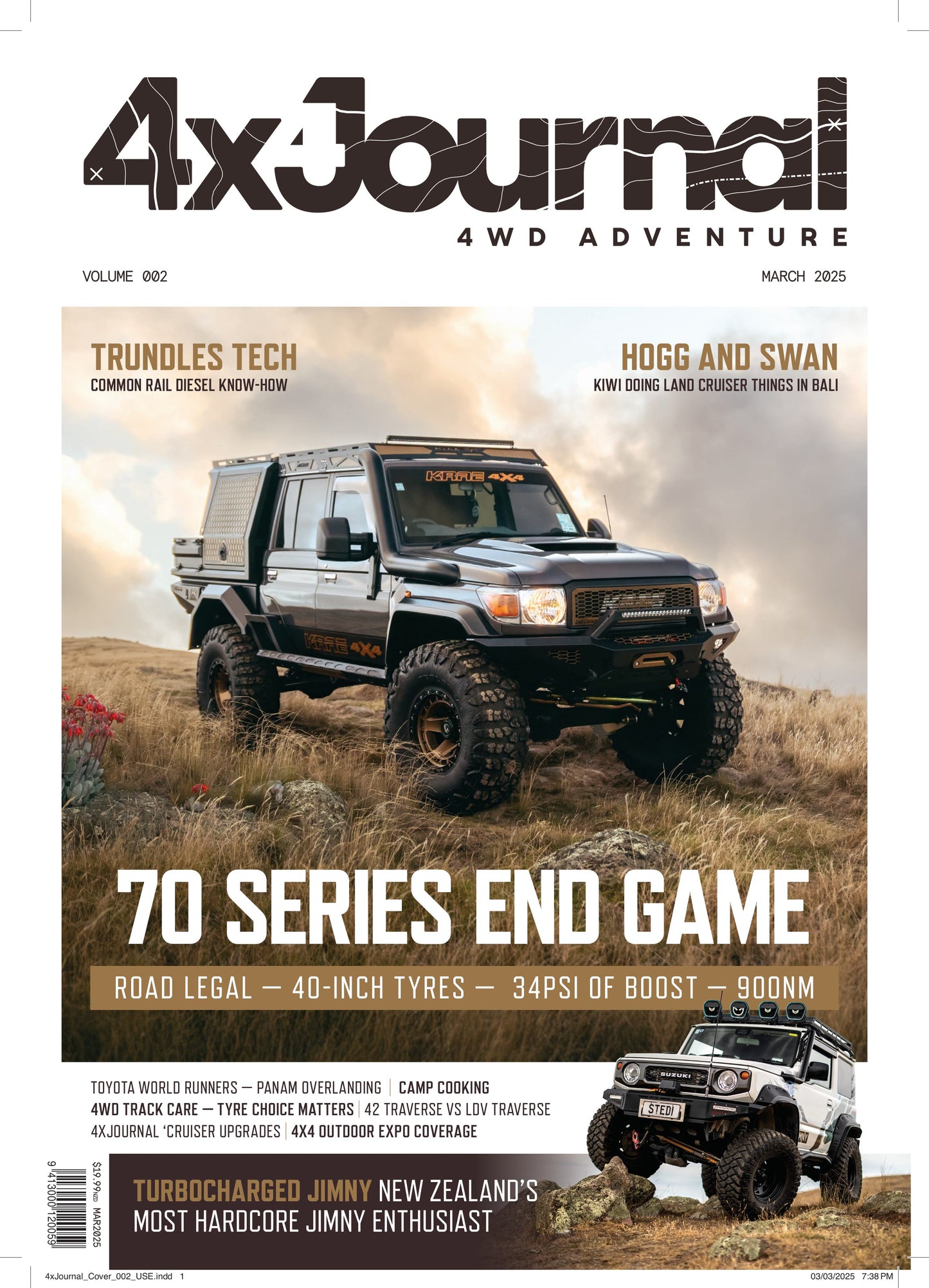
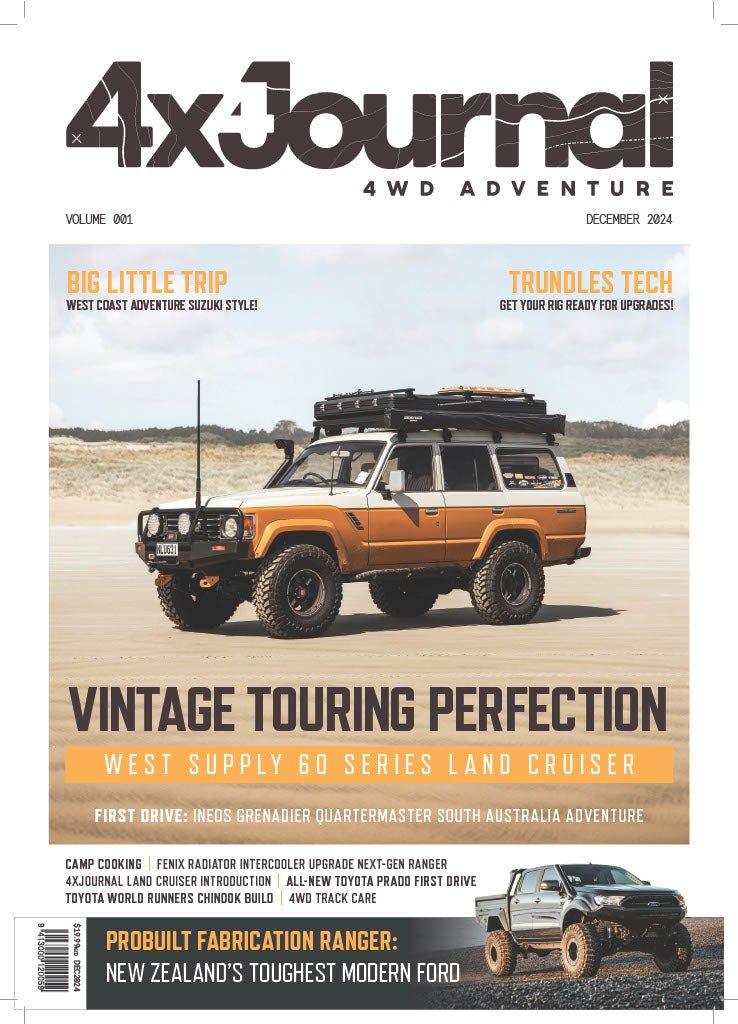
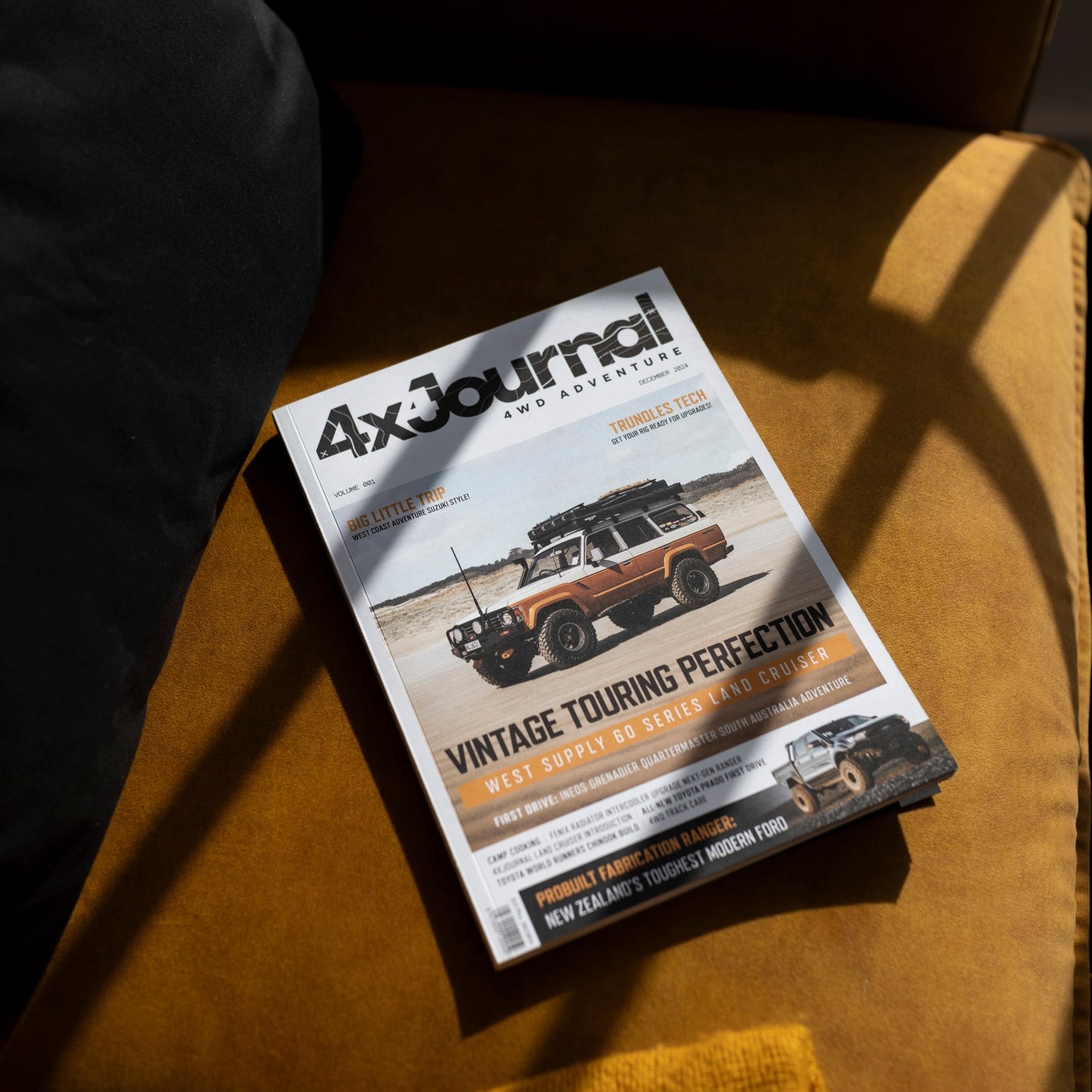
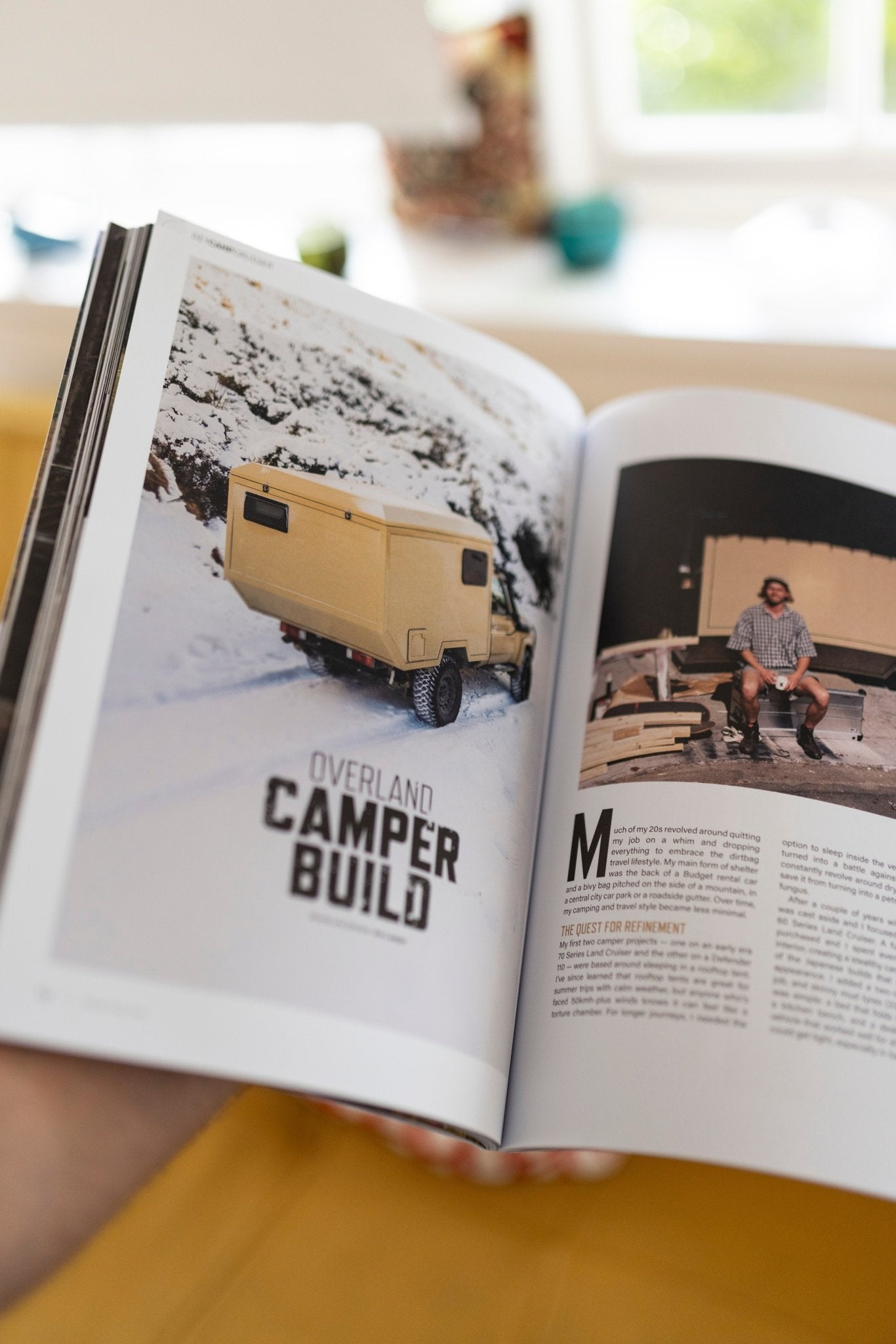
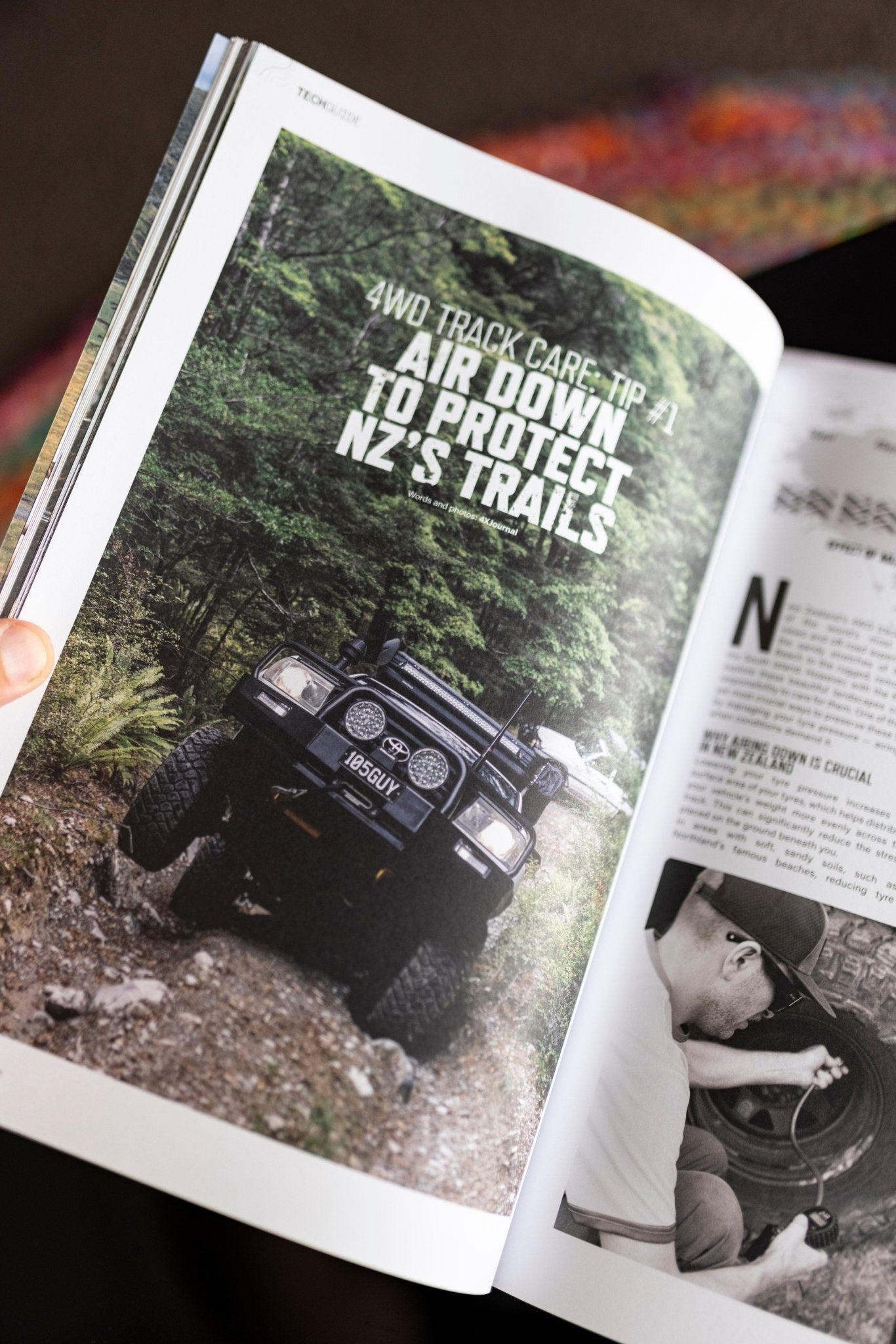
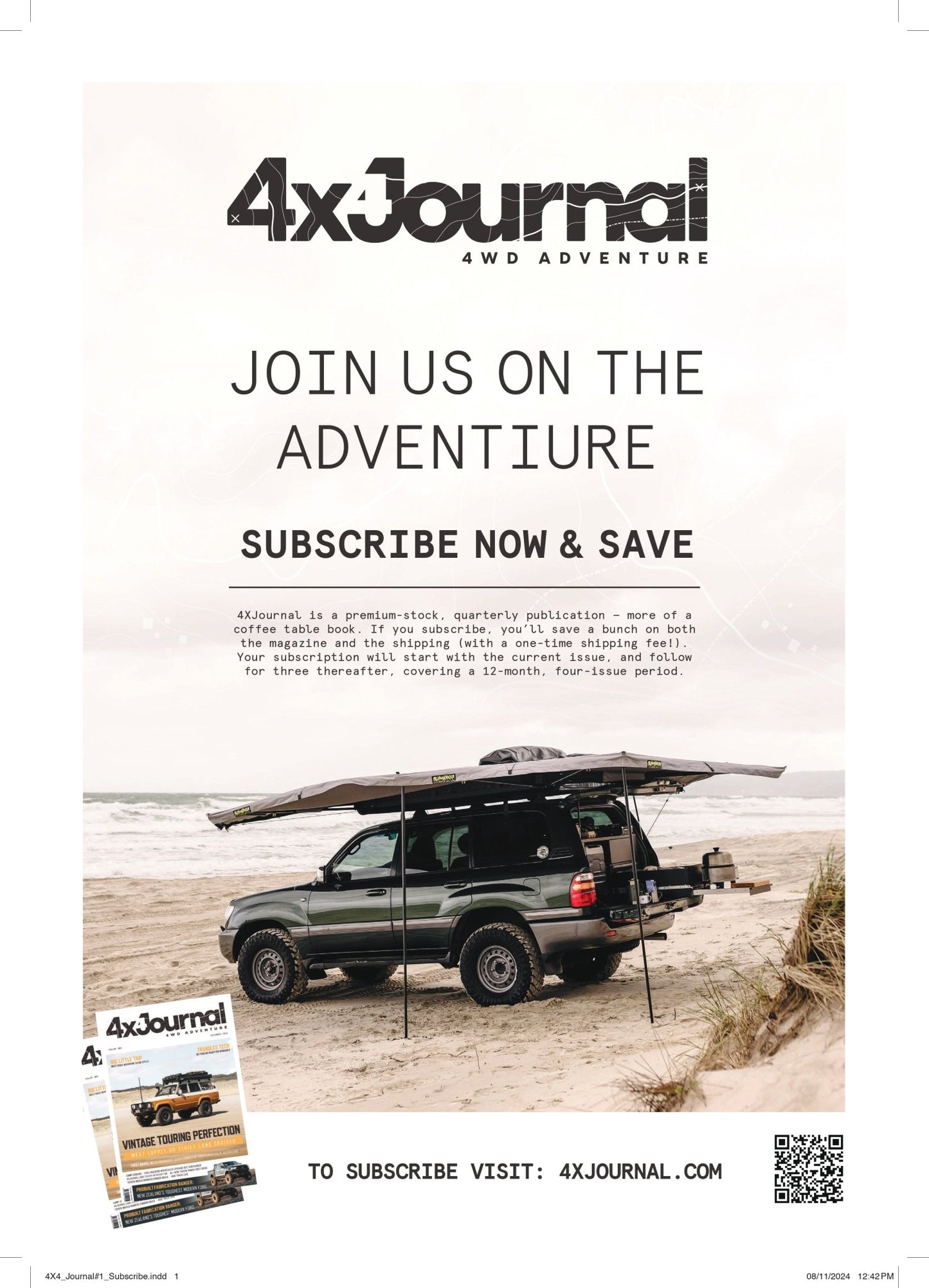
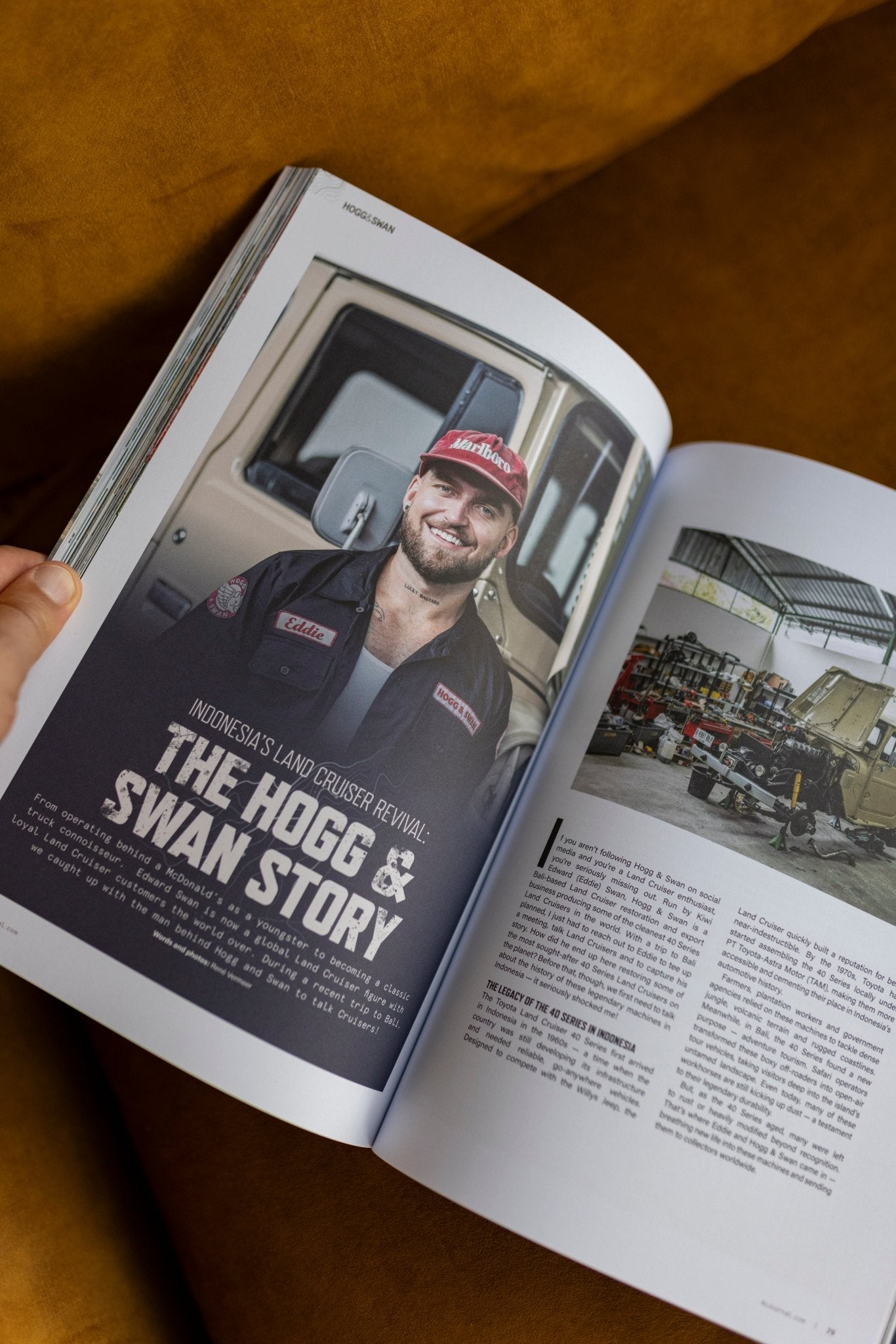
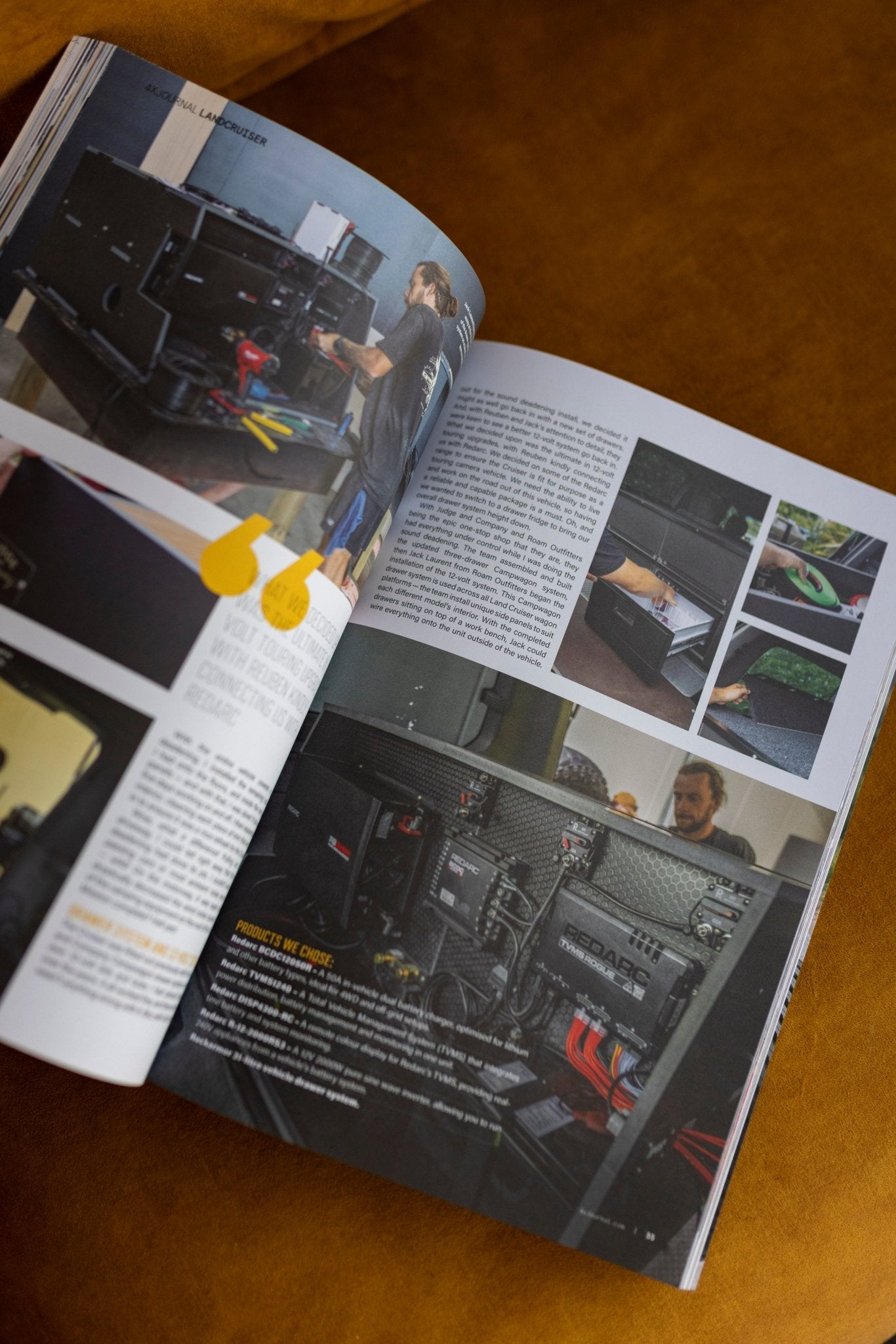
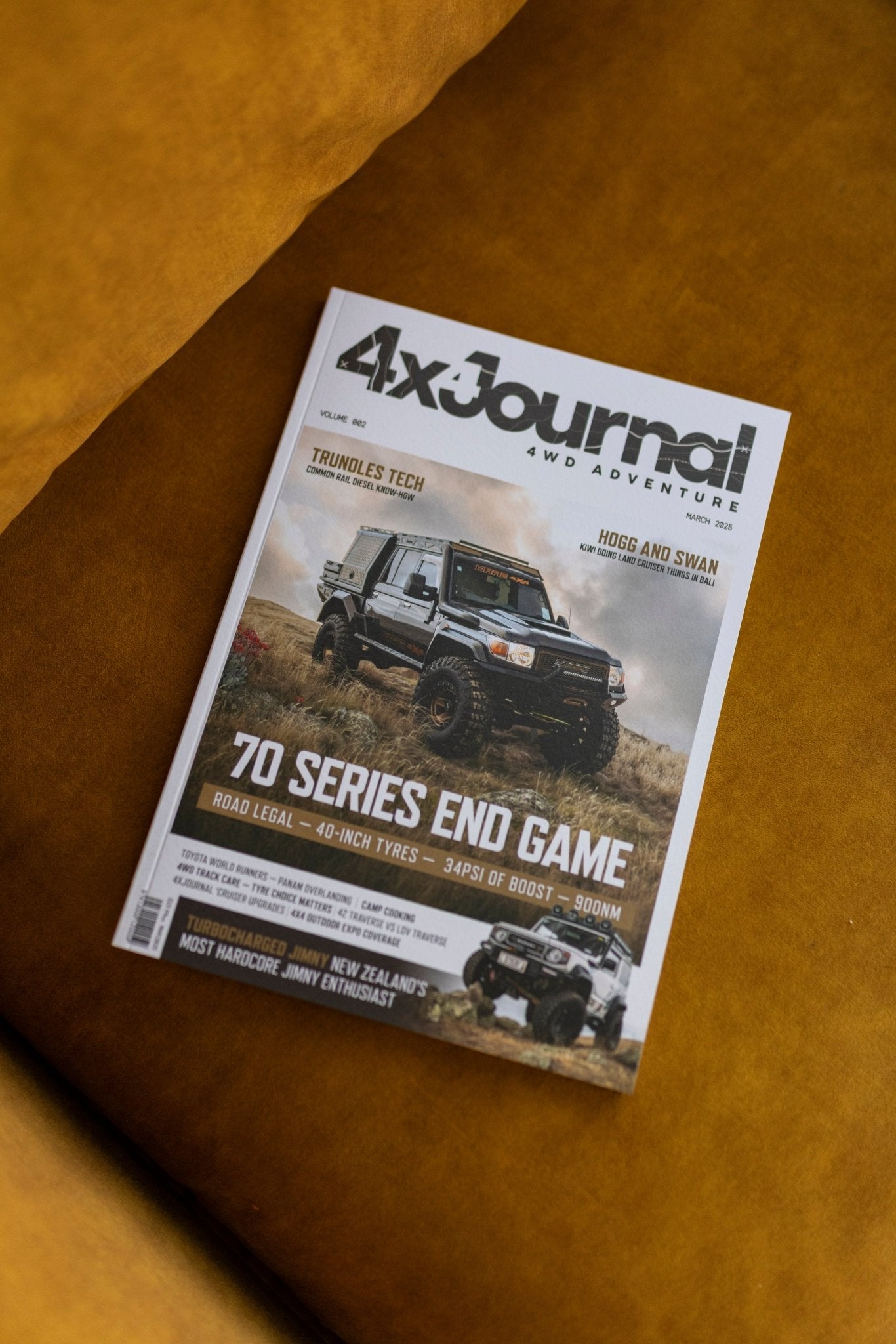
1 comment
It just ticks all the box’s and will definitely take the market by storm. I’m looking forward to the delivery of my Xpro soon.